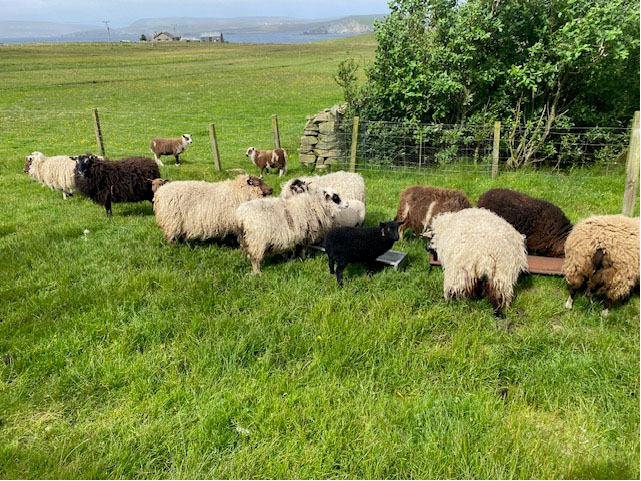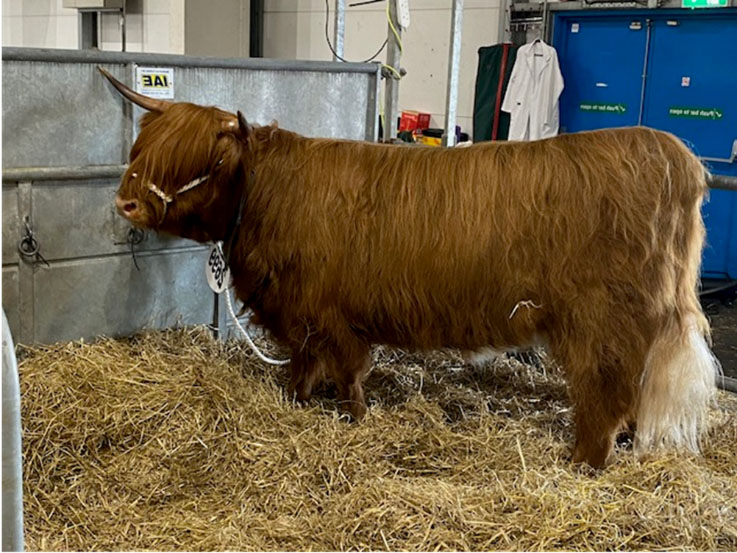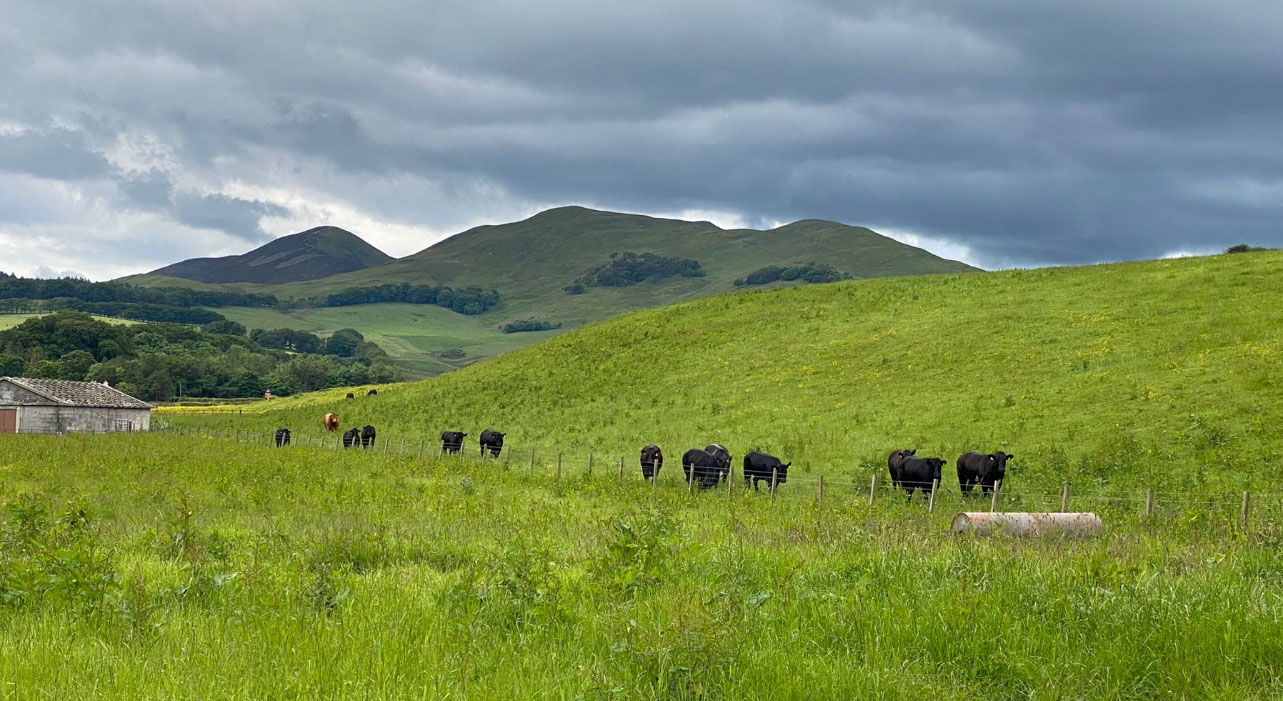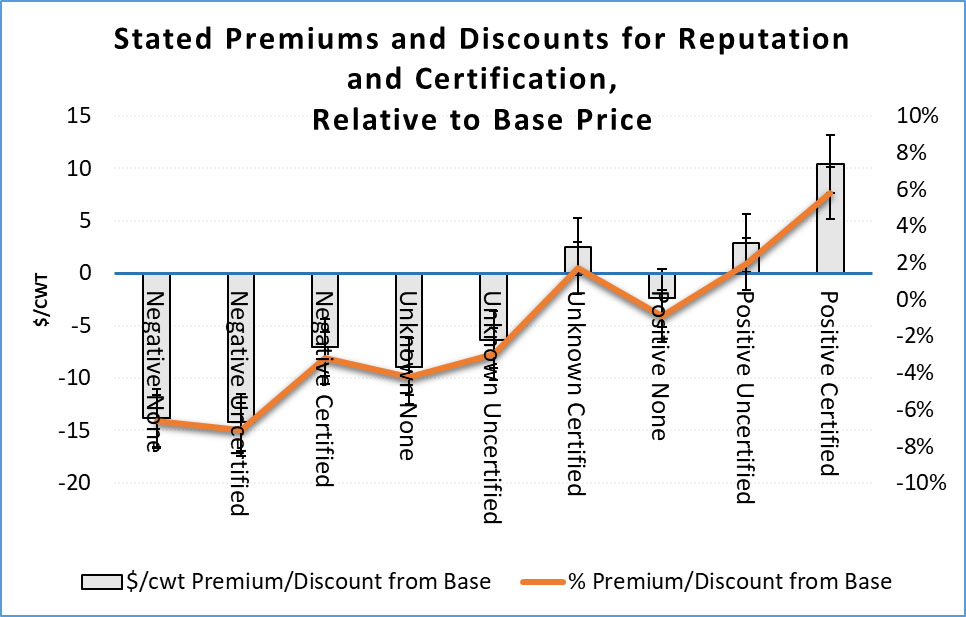Cow-Calf Corner | June 24, 2024
Scotland’s Livestock Industry
Derrell S. Peel, Oklahoma State University Extension Livestock Marketing Specialist
I’m writing this newsletter on a ferry about to depart the Shetland Islands in far north Scotland. I have been touring Shetland the last two days with a group of students from Oklahoma State University as part of a study abroad travel course. The Shetland Islands is the farthest north part of the United Kingdom. The capital city of Lerwick is at 60 degrees north latitude. That is the same as the northern border of Alberta, Canada (nearly 750 miles north of Calgary). Agriculture is difficult here with a growing season of about 100 days. Crop production is limited to small amounts of barley and oats. Most of the land is used for pasture and hay production. Sheep is the primary livestock industry here with sheep outnumbering people on the island by about five to one. Shetland is home to the Shetland breed of sheep (photo below), a hardy heritage breed adapted to survive outdoors in the harsh climate. The island is also home to the stout and hardy Shetland pony, important in the 19th century for use in tin and coal mines.
Sheep production is the largest livestock industry in all of Scotland with sheep outnumbering
cattle by 4 to 1. Census data from 2023 shows that the total sheep inventory in Scotland
is 6.6 million head compared to the total cattle inventory of 1.68 million head. Nevertheless,
cattle production is important and in many ways is symbolic of Scottish agriculture.
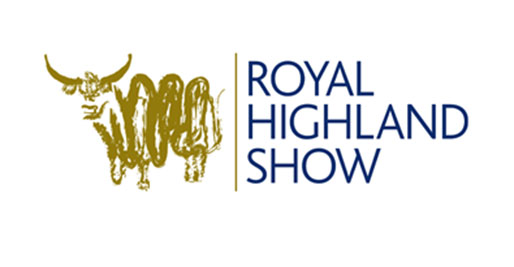 Last week, we visited the Royal Highland Show (RHS), which is a large four-day agricultural
event reminiscent of the state fairs at any major U.S. agricultural state. The logo
of the RHS (right) depicts the most iconic cattle breed in Scotland, Highland cattle
(photo below).
Last week, we visited the Royal Highland Show (RHS), which is a large four-day agricultural
event reminiscent of the state fairs at any major U.S. agricultural state. The logo
of the RHS (right) depicts the most iconic cattle breed in Scotland, Highland cattle
(photo below).
In addition to Highland cattle, many other cattle breeds can be found at the RHS, some familiar and some not so familiar. Familiar continental breeds are popular for terminal crosses including Limousin, Charolais and Simmental. Less familiar are Belgian Blue cattle, heavily muscled cattle not used in the U.S. but popular in Europe. The cattle are known as British Blue in the U.K. following Brexit. Other British breeds found at the RHS include Shorthorn, Belted Galloway, Hereford and, of course, the namesake of the city I arrived at on the ferry this morning: Aberdeen Angus. The photo below is a view of Angus cattle and the countryside near Edinburgh.
I’m finishing this article on a train from Aberdeen to Glasgow, Scotland. Below is a beautiful view of the coastline in Bressay Island in Shetland.
Summer Management Checklist to Protect Assets
Mark Z. Johnson, Oklahoma State University Extension Beef Cattle Breeding Specialist
The U.S. beef cowherd has been in liquidation since the last cycle peak of nearly 32 million head in 2019, to the present just over 28 million head. This is the lowest beef cow inventory since the early 1960s. This long-term liquidation has primarily been the result of drought but also largely influenced by a lack of profitability, until last year. The lack of profitability has correspondingly influenced a low rate of heifer retention in recent years. At present, it appears as though cow herd numbers have stabilized and data does not indicate that restocking or expansion is taking place at this point.
Currently the forces opposing expansion include age of producers, interest rates, labor availability, and the outlook for a return of the La Nina weather pattern. In addition, the cost of taking on cow or bred heifer inventory with the increase of female prices is a hindrance. Cyclically, the market is one year into the cycle of higher prices. In the current market the value of cattle is historically robust and should remain so for several calf crops to come.
Summer has arrived. Consider the following in your summer management plan in order to protect your assets and/or add value in the weeks and months ahead:
- Fly and Tick Control
- Anaplasmosis Control
- Water Supply
- Remove Bulls from breeding pastures in a timely fashion to control the length of calving season
- Cut native grass hay meadows by early July for the best trade-off of Quality and Quantity.
- Manage pastures and prepare for drought. Many Oklahoma pastures are still in drought recovery. A dryer (La Nina) weather pattern is predicted for the next several months. Manage accordingly. Scout pastures now to identify weeds and plan your weed control program for next year.
- Dehorning, castration and a vaccination program leading to premiums for health are
all management practices that add value to calves. As well, assurance of specific
cattle handling and health product use like those verified through Beef Quality Assurance
(BQA) can be documented to add value. Cattle health is the foundation of specific
marketing programs buyers seek to reduce risk. While a variety of programs exist,
most all start with a first round of vaccinations when calves are two to four months
of age while still nursing cows. The first round of vaccinations for all would include
the first dose of clostridial and respiratory vaccines.
With current prices, these management practices have more value than ever. More details on the Oklahoma Quality Beef Network (OQBN).
The Value of Reputation
Kellie Curry Raper, Oklahoma State University Extension Livestock Marketing Specialist, Department of Agricultural Economics
“Reputation cattle” is a term you’ll hear often when cattle prices are discussed. In a survey of Oklahoma cattle buyers, 64% said that seller reputation played a part in their last feeder calf purchasing decision (Boline 2016). What is “reputation” in the cattle market? How do you build it? And what is it worth?
What is it?
Reputation has several puzzle pieces that come together to create the whole picture. The biggest puzzle piece is how cattle perform for the buyer. If a buyer has a positive experience with a seller’s cattle, that buyer is more likely to raise a hand to bid the next time that seller’s cattle come through the ring and may be willing to pay a premium for those cattle. That seller is building a positive reputation with the buyer – and other buyers - for cattle performance. If the calves were a train wreck, trust that buyers have a very long memory. Cattle performance encompasses a lot of things, including gains, health, and handling ease to name a few – and different cattle buyers will value certain attributes more than others.
How do you build it?
“You can’t build a reputation on what you are going to do.” Henry Ford
What you do today influences the reputation of your cattle tomorrow. A positive reputation for quality cattle is built over time by marketing cattle that perform well for buyers’ needs. That performance is linked to cattle genetics, herd management protocols, and calf management practices, among others. Work toward improving the overall quality of your cattle and toward implementing important health management protocols that strengthen immune systems of calves moving through the system.
Cattle buyers are very good at their craft and are particularly good at judging the visible attributes of cattle and what that indicates about potential. However, cattle also have attributes that are not easily observed. These attributes are known as credence attributes. The buyer is left to decide whether attributes that may be announced but are not physically observable are present. When sellers have established their reputation, buyers see management claims as more credible.
Some of you believe that you have to be a large operation to establish a positive reputation, even if you are “doing all the right things.” If you are a smaller operation and feel the struggle of establishing a reputation, there is evidence that third-party certification of the preconditioning bundle of calf management practices at least partially substitutes for an established reputation when it comes to market value.
What is it worth?
While the market value of seller reputation in cattle markets is considered to be a key component of the price paid by the buyer, it is elusive to measure in standard auction data. Boline (2016) interviewed cattle buyers on-site at livestock auctions and found that reputation does matter, but also that third-party verification can act as a proxy for reputation (Figure 1). Cattle buyers were willing to pay similar premiums, on average, for certified cattle with an unknown reputation ($2.52/cwt) and uncertified cattle with a positive reputation ($2.86/cwt). Certified cattle from a reputation seller averaged $10.42/cwt in stated premiums. It is also important to note that negative reputations were discounted more heavily than positive reputations were rewarded and that even certified cattle from a seller with a negative reputation were still discounted quite heavily. For cattle with an unknown reputation, only 2% would not consider those cattle if certified, but if cattle were uncertified, 9% of buyers would not consider purchasing them. However, 25% of buyers would not consider purchasing cattle with a negative reputation, regardless of certification.
Figure 1. Cattle Buyer Willingness to Pay Based on Seller Reputation
“It takes many good deeds to build a good reputation, and only one bad one to lose it.” Benjamin Franklin
Cattle buyers talk, so reputation will also be built around the coffee pot at the livestock market café or the feedyard. Whenever possible, get feedback from buyers about cattle they have purchased from you. If things went well, figure out what you did right. If things went south, figure out what needs corrected. Remember that reputations can be positive or negative, so take care that you are making management decisions that continue to build up the positive reputation of your cattle.

